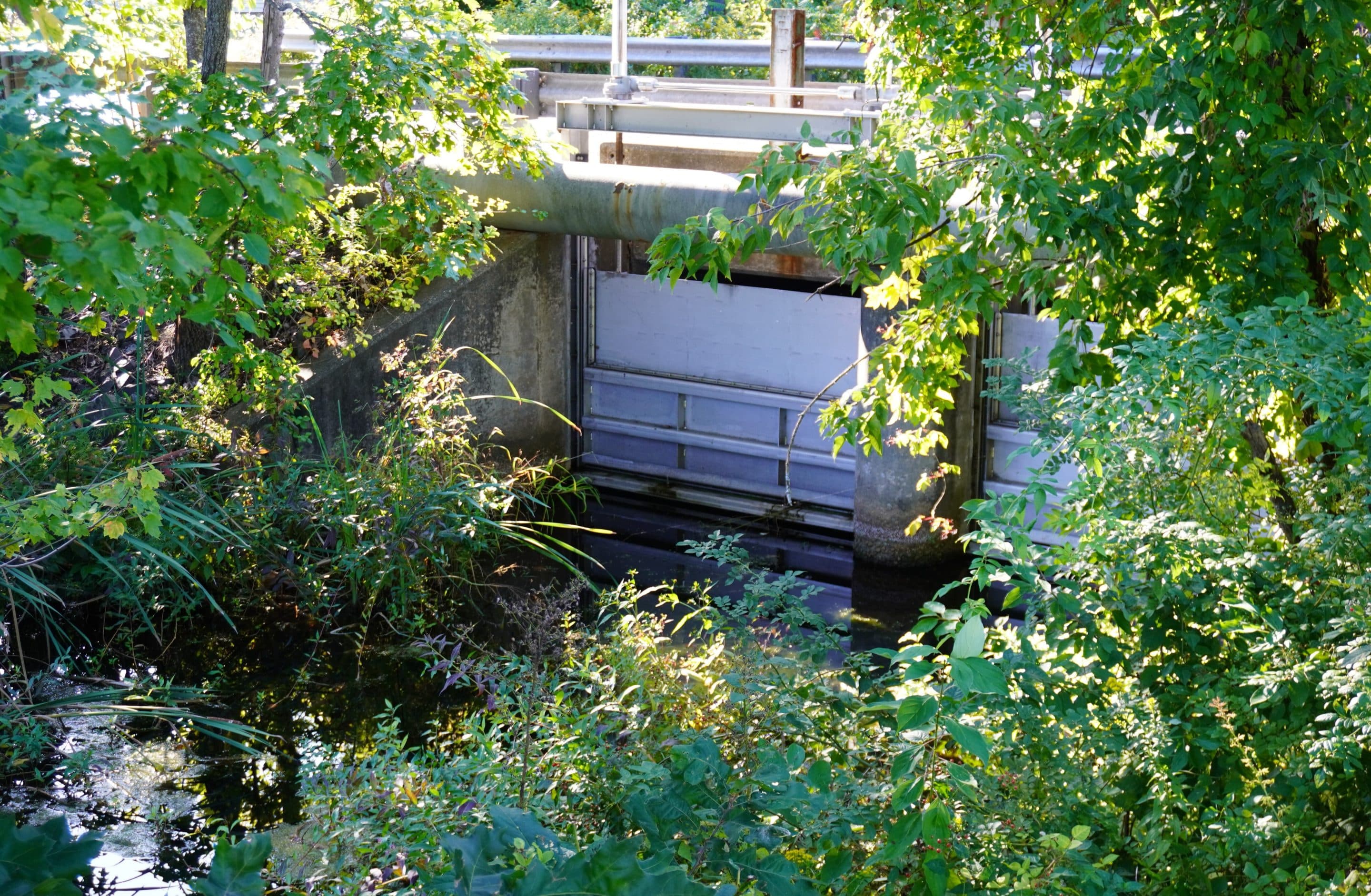A $500,00 earmark was included in the state’s Bond Bill last year to fund the dredging of the Middle Ponds of Congamond Lakes to increase the depth of the water just off the south boat ramp and to clear the weir under the Berkshire Avenue bridge, shown in the photo, of debris. The town is working to have the funding released.
Reminder Publishing file photo
SOUTHWICK — An allocation of $500,000 included in the 2024 bond bill to dredge the area directly in front of the south boat ramp on the Middle Pond of Congamond Lakes could make the project a reality, but it’s not a sure thing.
“I just want to explain it’s an earmark. It’s not a check,” said Lake Management Committee Chair Richard Grannells at the committee’s meeting in late October.
“Senator Mark and our representative Nick Boldyga and a couple of others are working to get that money released to the town,” Grannells said during the meeting, referring to state Sen. Paul Mark, a Becket Democrat, and Boldyga, the Republican state representative from Southwick.
For years the Lake Management Committee has been pushing to have the project funded and early last year it applied for pilot grant program that was being administered by the state’s Executive Office of Economic Development for small dredging projects.
In an attempt to “sweeten the pot,” Town Meeting approved $100,000 to go toward the project, if it was awarded. It wasn’t.
However, Grannells, with the Lake Management Committee’s support, and the town’s Chief Administrative Officer Nicole Parker have been making the case to state officials about how important the project is, not only to Southwick, but the region.
In an email Parker sent to Mark in August, she recounted her experience in getting a bond bill earmark released, and that it was nearly impossible, but that eventually the money was released.
“We could possibly get it released here too, with a lot of support from our reps/senator/congressman and anyone else willing to join us. We must prove how integral this project is to the entire region and to the commonwealth,” Parker wrote in an email sent to Mark and members of the committee.
In Mark’s response, he acknowledged that getting the money can be a challenge.
“It can be difficult, but with the right collaboration and a project ready to go, we can make it happen,” Mark wrote in an email, which is part of an email thread about the project that was provided to Reminder Publishing.
He also explained that the project being included in the bond bill, also known as the Leads Act, does not mean the application is a sure thing.
“It isn’t like the budget where a check just shows up, there’s lots of legwork,” Mark wrote.
But he was encouraging.
“You have a partner who wants to help make it happen here on my end,” he wrote.
The primary issue at the boat ramp is the depth of water, which is 2 feet, and often less than that.
Often when boats are launched from the ramp, they must drift out to where it is deep enough to drop their propellers into the water.
And when a boater drops a propeller into such shallow water, it stirs up muck on the pond’s bottom, which can release phosphorus trapped in the organic matter, leading to algae blooms, like those found in the Middle Pond in early October, triggering an advisory.
There would be another benefit for dredging that area.
It includes the weir under the short bridge on Berkshire Avenue that is used as an outlet for Middle Pond into Great Brook when the water level gets too high after heavy rain.
That weir has not been opened for years because Great Brook is choked with trees, standing and fallen, and heavy undergrowth, and if it was opened, instead of water flowing from the pond into the brook, it would flow into the pond carrying with it years of sediment that could affect water quality of all three ponds.
In mid-October, a remote meeting was held with representatives of Mark’s office and the state’s Department of Conservation & Recreation and LMC members.
“I think it went very well,” Grannells said
He said the group wanted data about water quality, which Grannells and LMC member Eric Mueller are providing.
“Their intent is to help justify the need to release the money now. Don’t wait. It’s important to do it now,” Grannells said.
To address the flows of Great Brook and Canal Brook, there is another project to enhance the ponds’ water quality.
The Natural Resources Conservation Service contracted with the Holyoke-based Pare Corporation, whose engineers have been surveying the brook and canal to develop a plan to tackle what is sure to be an expensive project — upwards of $10 million, Grannells said — to clear debris from both.
Despite the federal government shutdown, the funds for surveying the brook and canal have already been allocated allowing the work to continue.


